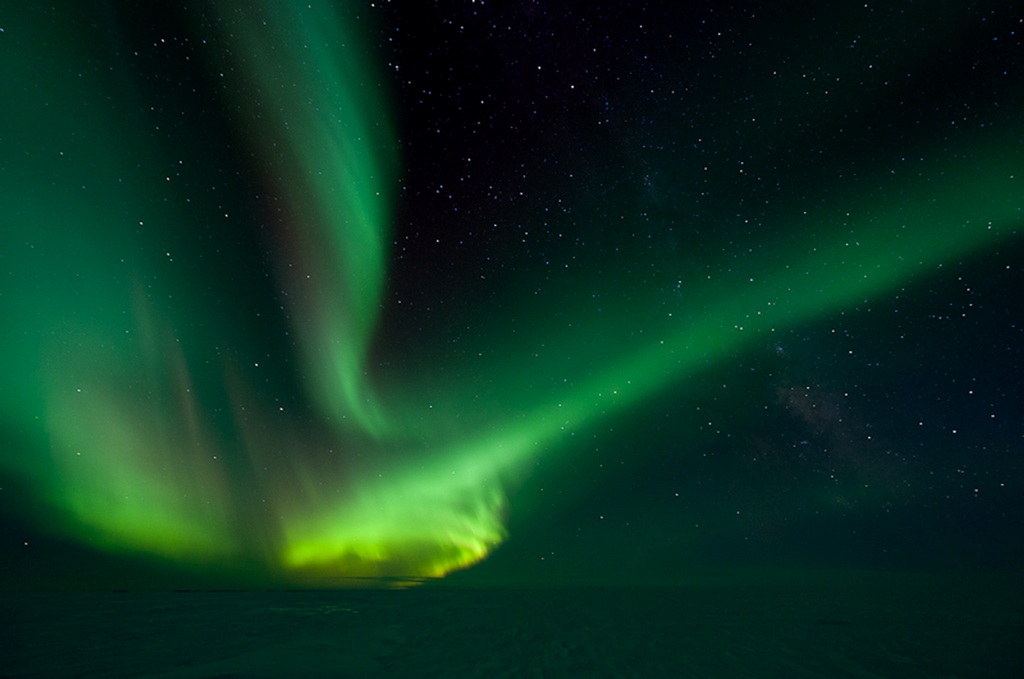
02 Apr Over-wintering in Antarctica
By Jonathan Ward
The 8th of December 2011 is a date I will never forget. After nearly six months of training at the South African National Space Agency in Hermanus, I stood on the deck of the SA Agulhas I, surrounded by nine relative strangers, as it sailed out of Table Bay, marking the beginning of my 15 month adventure down South.

We watched as Table Mountain shrunk into a small dot and then disappeared below the horizon. There was now no turning back for the ten members of the 51st South African National Antarctic Expedition’s (SANAE) over-wintering team; for better or for worse, we would be living and working together until the summer of 2012/2013. What had we all gotten ourselves into?
It is not easy over-wintering in Antarctica. It is a job in an extreme environment that nothing can truly prepare you for. Technology does not always operate or last as long as it would back in South Africa, your supplies are limited and you are expected to make do with what is available. You spend many hours outdoors, especially during the summer, and there is a physical side to much of the work that you undertake. In addition, the climate and long periods of isolation challenge you both mentally and physically. To put it bluntly – it is not for the faint hearted.
The positive aspect is that you are in one of the most remote, visually stunning, unspoilt and adventurous places on the planet; fewer than 600 South Africans have over-wintered in Antarctica in our 53 year history on the continent.

Life at the SANAE IV base is very different to life back in South Africa. The summer take-over is often frantic and you sometimes struggle to find enough time, even with 24 hours of daylight, to complete all the necessary tasks. On the other hand, the austral winter is brutal. There is almost 24 hours of darkness and extreme cold, during which time one can often fail to muster the enthusiasm to get out of bed. Routine and keeping busy are always your biggest friends in Antarctica.
The reason we travel to Antarctica is because it is in an ideal location for scientists to study space weather. Since it is situated so close to the geo-magnetic South Pole, where all the Earth’s magnetic field lines converge. It opens up a unique window into geo-space, which allows us to study the Earth’s magnetosphere, ionosphere and other related space weather phenomena. The SANAE IV base hosts a wide suite of instruments, including magnetometers, riometers, GPS, VLF and HF Radar.
Science Support Engineers from SANSA spend the year maintaining and developing these systems, while ensuring that meaningful data is transferred to our facilities back home.

The highlights of my year were seeing Aurora Australis (Southern Lights), the incredible wild-life, my two excursions to Grunehogna, a popular research site for Geologists and meeting so many amazing people throughout my journey. The lowlights would have to be the isolation, missing important events back home as well as sometimes having to deal with challenging team dynamics.
The 11th of February 2013 is another date I will never forget. I could not believe how fast the time had flown by as the Agulhas II sailed away from the ice shelf. I felt very mixed emotions; sad to be leaving such a remarkable place but happy to be able to see my family and friends again; thankful for this awesome opportunity but ready to face new challenges. I learnt a great deal of things both about myself and others. Most of all I think I learnt patience, resourcefulness and deeper respect for people’s cultures and beliefs.
All in all it was a very positive experience, one that I can look back on and be proud to have been a part of. If given the opportunity, I would definitely go back. Antarctica is the kind of place that really hooks you; once you have been there you would do almost anything to get back.



